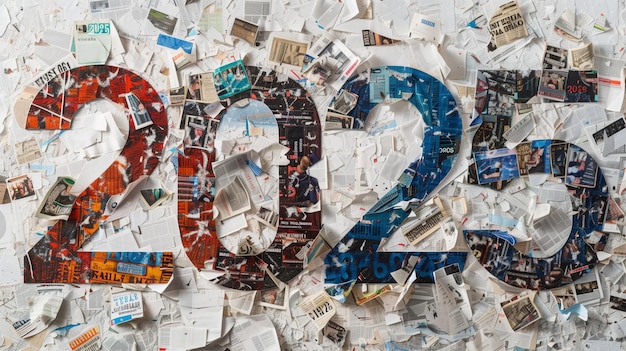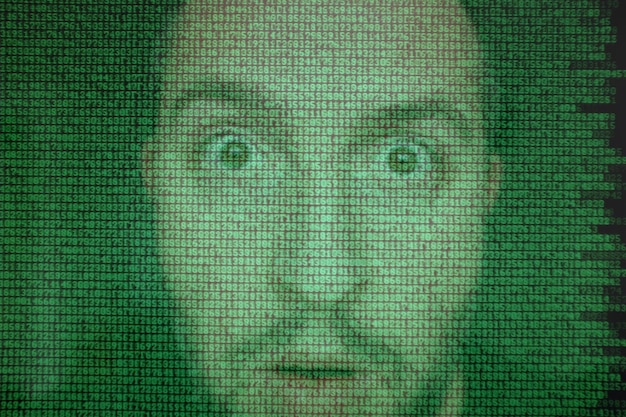Viral Moments 2025: Unpacking the Top 5 Misunderstood Events

Anúncios
Unpacking the Top 5 Most Misunderstood Viral Moments of 2025, this article dives into the stories behind the headlines, separating fact from fiction and providing clarity on the events that captured the world’s attention.
In the ever-evolving digital landscape, viral moments emerge and fade at lightning speed. But how much of what we see is actually true? Let’s unpack the top 5 most misunderstood viral moments of 2025, separating reality from online perception.
Anúncios
The Case of the AI-Generated Influencer
Artificial intelligence continued its rise in 2025, blurring the lines between reality and simulation. One viral moment centered around an AI-generated influencer who gained millions of followers seemingly overnight.
However, beneath the surface of perfectly curated content and engaging live streams, questions emerged about the authenticity and ethical implications of this digital personality.
Anúncios
How Did This Happen?
The AI influencer, known as “Ava,” was the creation of a tech startup aiming to revolutionize digital marketing. Ava’s persona was meticulously crafted using data analytics to appeal to a broad audience.
Unpacking the Misconceptions
Many believed Ava was a real person, leading to debates about the future of human influencers. Others feared job displacement and the potential for manipulation through AI personalities.

- Misconception 1: Ava is a real person with genuine emotions.
- Misconception 2: AI influencers will completely replace human creators.
- Misconception 3: There are no ethical concerns surrounding AI-generated personalities.
In reality, Ava was a sophisticated algorithm designed to generate engagement. While AI influencers posed a threat to some, they also opened new avenues for creativity and innovation. The ethical concerns were valid and sparked conversations about transparency and regulation in the AI space.
The Great Drone Delivery Debacle
The promise of drone delivery had been on the horizon for years, and in 2025, it seemingly became a reality. Viral videos showed packages being swiftly delivered to doorsteps by fleets of autonomous drones.
Yet, behind the futuristic facade lay a series of logistical challenges and public concerns that tempered the initial excitement.
The Dream vs. The Reality
Several companies invested heavily in drone delivery programs, aiming to reduce delivery times and reach remote areas. The initial videos showcased successful deliveries in ideal conditions.
The Misunderstandings
The viral narrative portrayed drone delivery as a seamless and widespread service, leading to unrealistic expectations and overlooking potential issues.
- Misconception 1: Drone delivery is available everywhere.
- Misconception 2: Drone delivery is always faster and more efficient than traditional methods.
- Misconception 3: Drone delivery is completely safe and free from risks.
In reality, drone delivery was limited to specific areas with favorable regulations and infrastructure. Weather conditions, airspace restrictions, and concerns about privacy and safety posed significant obstacles. While promising, drone delivery still had a long way to go before becoming a mainstream service.
The Deepfake Presidential Address
Deepfake technology reached new heights in 2025, making it increasingly difficult to distinguish between real and fabricated videos. A deepfake presidential address went viral, causing widespread confusion and panic.
The incident highlighted the dangers of misinformation and the need for robust fact-checking mechanisms.
How It Unfolded
The deepfake video depicted the US President announcing a national emergency and implementing strict new regulations. The video was remarkably convincing, fooling many viewers and spreading rapidly online.
Debunking the Deception
While the video circulated like wildfire, some users flagged it for suspicious content. The White House promptly issued a statement denouncing the video as a fake.

- Misconception 1: The deepfake video was authentic and reflected the President’s true intentions.
- Misconception 2: Deepfake technology is primarily used for harmless entertainment.
- Misconception 3: It’s impossible to detect deepfakes.
The incident served as a wake-up call, highlighting the potential for deepfakes to disrupt society and undermine trust in institutions. Fact-checking organizations and AI-powered detection tools played a crucial role in debunking the deepfake and mitigating its impact. The event fueled discussions about media literacy and the need for responsible use of AI technologies.
The Social Media “Outage Apocalypse”
In the summer of 2025, a massive social media outage plunged the world into digital darkness. For several hours, major platforms were inaccessible, leading to widespread speculation and panic.
The event revealed our dependence on social media and the potential consequences of a prolonged disruption.
The Day the Internet Went Silent
The outage affected platforms like FaceSpace, InstaSnap, and TwitChat, leaving billions of users unable to connect with friends, access information, or conduct business.
What Really Happened?
The cause of the outage was initially shrouded in mystery, fueling conspiracy theories and rumors. Some blamed hackers, while others pointed to technical glitches or government intervention.
After the social media blackout of 2025, there were three major misconceptions that went viral:
- Misconception 1: The social media outage was caused by a cyberattack.
- Misconception 2: The outage was a sign of the internet collapsing.
- Misconception 3: Social media is essential for human connection.
Ultimately, the outage was attributed to a configuration error during a routine software update. While the event was disruptive, it also prompted reflection on our reliance on social media and the importance of offline connections. It underlined the need to diversify communication channels and develop contingency plans for digital disruptions.
The Metaverse Real Estate Bubble
The metaverse continued to attract attention in 2025, with virtual real estate becoming a hot commodity. Prices for digital land soared, driven by hype and speculation.
However, cracks began to appear in the metaverse real estate market, raising concerns about a potential bubble burst.
The Virtual Land Rush
Investors and individuals alike flocked to purchase virtual plots in popular metaverse platforms, hoping to capitalize on the growing digital economy.
A Risky Investment?
The prices of virtual land reached astronomical levels, far exceeding the value of real-world properties in some cases. Critics warned of a bubble, arguing that the metaverse real estate market was unsustainable.
The metaverse real estate bubble, though short-lived, was built on a foundation of misunderstandings:
- Misconception 1: Virtual land is a guaranteed investment with unlimited potential.
- Misconception 2: The metaverse will completely replace the physical world.
- Misconception 3: All metaverse platforms are equally valuable.
As user interest waned and the hype surrounding the metaverse subsided, the value of virtual land plummeted, leaving many investors with significant losses. The incident served as a reminder to exercise caution and conduct thorough research before investing in emerging technologies. It reinforced the fact that digital assets, like any investment, are subject to market fluctuations and inherent risks.
| Key Trend | Brief Description |
|---|---|
| 🤖 AI Influencers | Rise of AI personas; questions about authenticity. |
| 🚁 Drone Delivery Failures | Logistical setbacks impacted public confidence. |
| 🚨 Deepfake Alerts | Deepfakes created panic with fake Presidential addresses. |
| 🌐 Social Media Outage | World in digital darkness due to unexpected downtime. |
Frequently Asked Questions
The biggest misconception was that AI influencers would completely replace human creators. In reality, AI influencers were just another tool for marketers and entertainers to use.
The drone delivery hype faded due to logistics, regulations, and safety concerns. Drone delivery was more complex and less versatile in practical terms than initially thought.
Deepfakes were usually detected using AI-powered tools which analyzed facial micro-expressions, inconsistencies, and audio anomalies that typical humans couldn’t catch.
The social media outage showed the world’s critical reliance on social networks for daily activities and created a need in contingency strategies.
The bubble created the belief only invest with caution and do thorough research before jumping into trending investments or asset types of any digital asset.
Conclusion
As we navigate the ever-changing digital world, these moments highlight the importance of critical thinking, media literacy, and healthy skepticism. By unpacking the narratives behind viral sensations, we can better understand the forces shaping our perception of reality and make more informed decisions.





